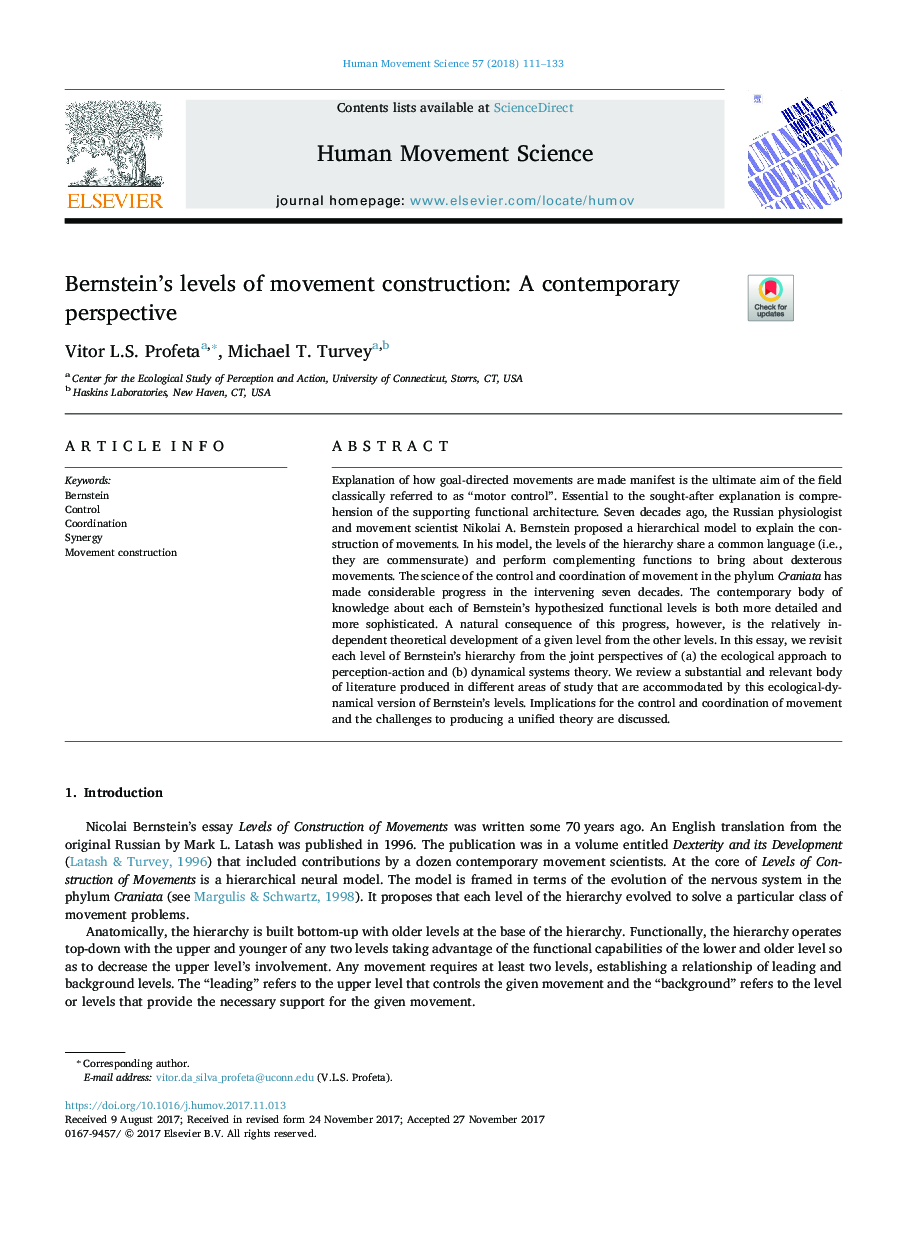| Article ID | Journal | Published Year | Pages | File Type |
|---|---|---|---|---|
| 7290948 | Human Movement Science | 2018 | 23 Pages |
Abstract
Explanation of how goal-directed movements are made manifest is the ultimate aim of the field classically referred to as “motor control”. Essential to the sought-after explanation is comprehension of the supporting functional architecture. Seven decades ago, the Russian physiologist and movement scientist Nikolai A. Bernstein proposed a hierarchical model to explain the construction of movements. In his model, the levels of the hierarchy share a common language (i.e., they are commensurate) and perform complementing functions to bring about dexterous movements. The science of the control and coordination of movement in the phylum Craniata has made considerable progress in the intervening seven decades. The contemporary body of knowledge about each of Bernstein's hypothesized functional levels is both more detailed and more sophisticated. A natural consequence of this progress, however, is the relatively independent theoretical development of a given level from the other levels. In this essay, we revisit each level of Bernstein's hierarchy from the joint perspectives of (a) the ecological approach to perception-action and (b) dynamical systems theory. We review a substantial and relevant body of literature produced in different areas of study that are accommodated by this ecological-dynamical version of Bernstein's levels. Implications for the control and coordination of movement and the challenges to producing a unified theory are discussed.
Keywords
Related Topics
Life Sciences
Neuroscience
Cognitive Neuroscience
Authors
Vitor L.S. Profeta, Michael T. Turvey,
